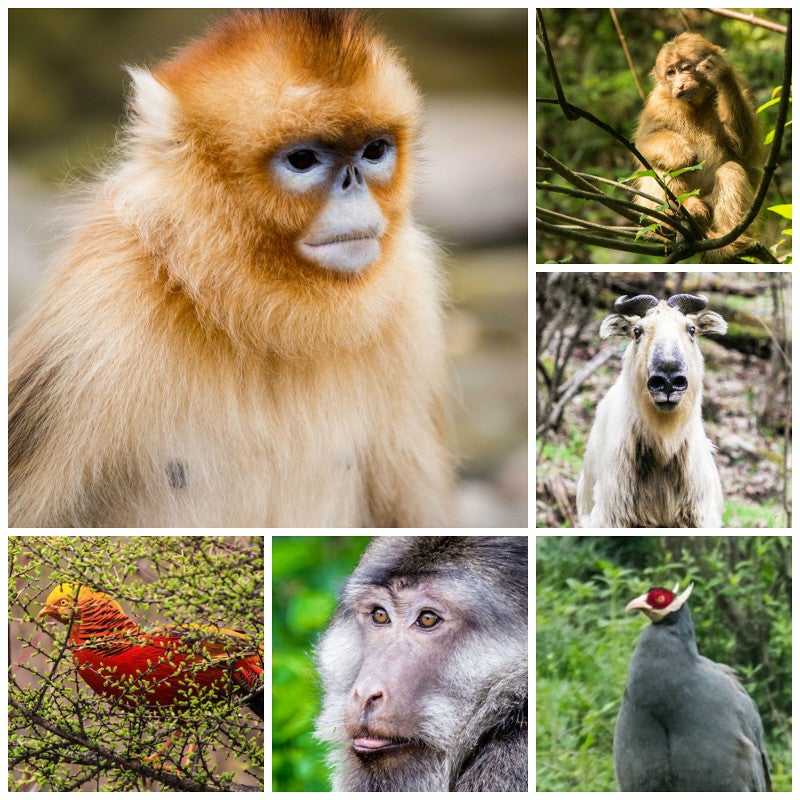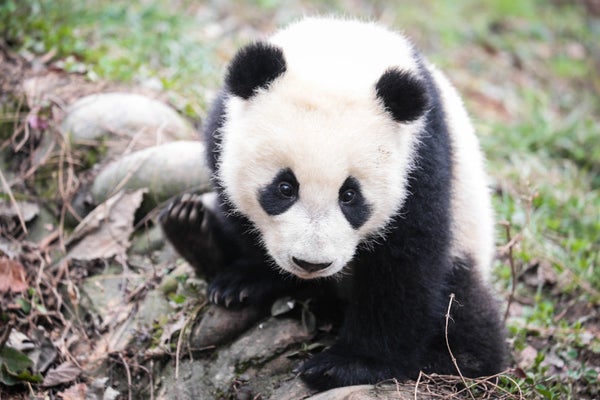This article was published in Scientific American’s former blog network and reflects the views of the author, not necessarily those of Scientific American
The giant panda (Ailuropoda melanoleuca) is more than just a fluffy conservation icon and a beloved media darling. It is also, according to new research, the protector of dozens of other unique Chinese species.
No, the panda itself doesn’t actually defend other wildlife, but it helps to save them all the same by serving as what’s known as an “umbrella species.” In other words, efforts to preserve habitats for the giant panda also protect many other mammals, birds and amphibians that live only alongside pandas, in the same areas and regions.
Conservationists have expressed this umbrella species theory for years but a paper published today in Biological Conservation proves it. The research looks at China’s endemic wildlife—species that exist nowhere else on Earth—and found that 70 percent of the country’s forest mammals, 70 percent of forest birds and 31 percent of forest amphibians all live within the panda’s geographic range and the nature reserves set aside to protect them. All told, 96 percent of this range overlaps with important conservation areas for other endemic forest species. “I was very pleasantly surprised by how well the panda does as an umbrella species,” says Stuart Pimm, the paper’s senior author and Doris Duke Professor of Conservation at Duke University. “The mountains of southwest China are a biodiversity hotspot. There are a lot of species that are protected by the panda’s range.”
On supporting science journalism
If you're enjoying this article, consider supporting our award-winning journalism by subscribing. By purchasing a subscription you are helping to ensure the future of impactful stories about the discoveries and ideas shaping our world today.
Pandas do protect a lot although a few species fall outside the umbrella. The research found that 14 of China’s endemic forest mammals, as well as 20 birds and 82 amphibians, are not currently protected by the giant panda’s current reserves. The paper identifies 10 locations that might be suitable for new or improved nature reserves to help expand that coverage. Many of these areas, located in Sichuan Province, which is considered the stronghold of giant pandas in the wild, are adjacent to existing reserves.
Protecting the newly identified sites, however, won’t save all of China’s unique wildlife. “Pandas are a good umbrella species for forest ecosystems in China but that’s not enough,” says co-author Binbin Li, a PhD student at Duke who spent a year crunching data from dozens of sources for the paper. “In China we have many ecosystems. We need more umbrella species.” For example, she says tigers could serve the same role in the northern part of the country. Snow leopards could be an umbrella for grassland species.
The new findings are important, Pimm and Li say, because many people doubt that China’s commitment to preserving giant panda habitat is doing much good. Other people around the world don’t even realize that wild pandas still live in their native forests. “A lot of the resources in China go to releasing captive pandas back into the wild,” Li says. “The news doesn’t cover that.” She says this paper helps showcase wild pandas and also demonstrate that the expense in preserving them is money well spent.
The researchers hope their paper helps to set the tone for future discussions not only about umbrella species but also giant pandas themselves, along with all of China’s wildlife. “We want to help the Chinese authorities, both at the provincial level and also naturally, to focus the debate on which areas they should protect,” Pimm says, “not just to protect pandas but to protect other species, too.”'
A selection of the other species protected by giant panda reserves:

Photos courtesy of Duke University
